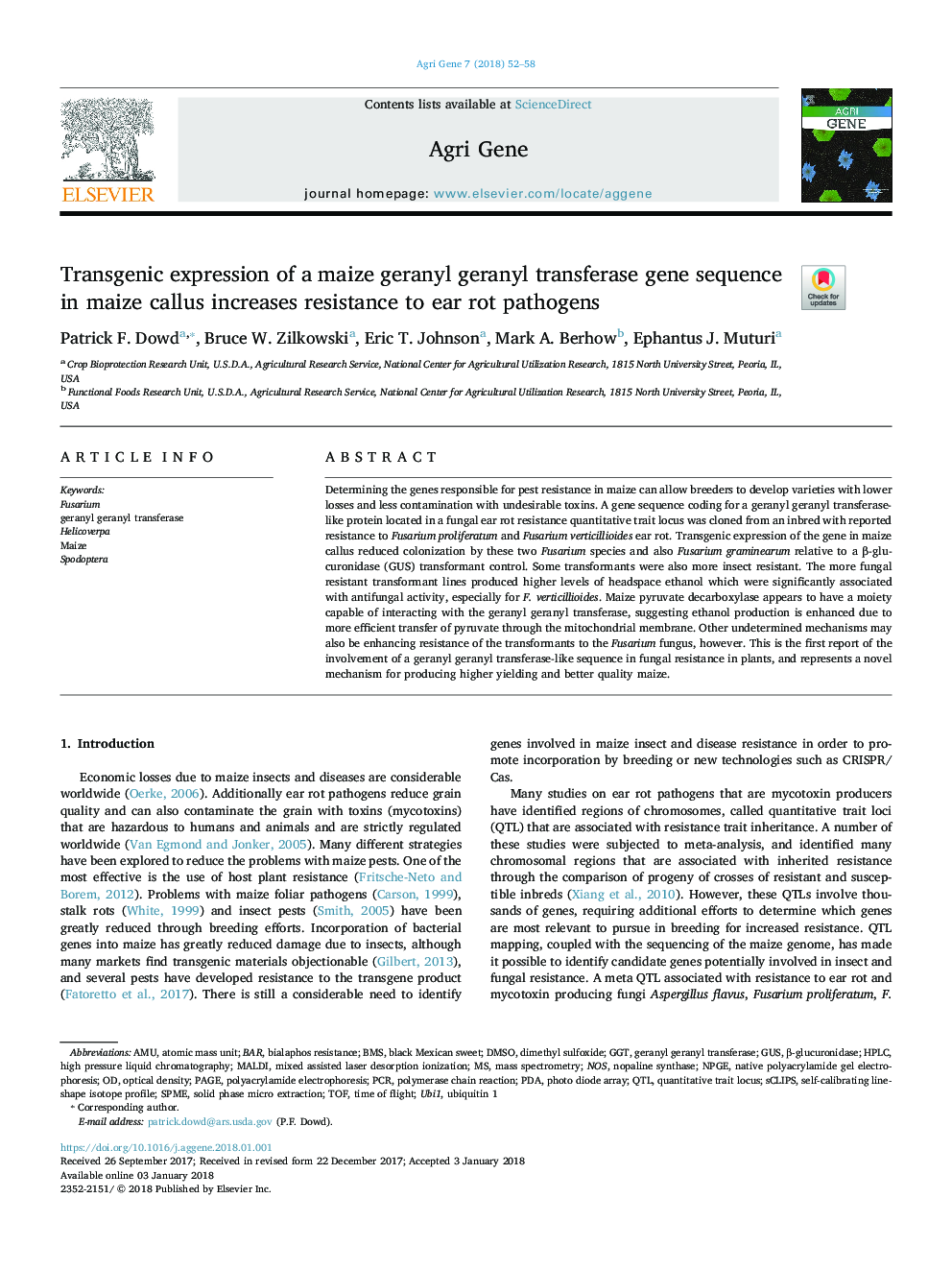| Article ID | Journal | Published Year | Pages | File Type |
|---|---|---|---|---|
| 8634939 | Agri Gene | 2018 | 7 Pages |
Abstract
Determining the genes responsible for pest resistance in maize can allow breeders to develop varieties with lower losses and less contamination with undesirable toxins. A gene sequence coding for a geranyl geranyl transferase-like protein located in a fungal ear rot resistance quantitative trait locus was cloned from an inbred with reported resistance to Fusarium proliferatum and Fusarium verticillioides ear rot. Transgenic expression of the gene in maize callus reduced colonization by these two Fusarium species and also Fusarium graminearum relative to a β-glucuronidase (GUS) transformant control. Some transformants were also more insect resistant. The more fungal resistant transformant lines produced higher levels of headspace ethanol which were significantly associated with antifungal activity, especially for F. verticillioides. Maize pyruvate decarboxylase appears to have a moiety capable of interacting with the geranyl geranyl transferase, suggesting ethanol production is enhanced due to more efficient transfer of pyruvate through the mitochondrial membrane. Other undetermined mechanisms may also be enhancing resistance of the transformants to the Fusarium fungus, however. This is the first report of the involvement of a geranyl geranyl transferase-like sequence in fungal resistance in plants, and represents a novel mechanism for producing higher yielding and better quality maize.
Keywords
SPMEBMSAMUPAGETOFNOSGUSQTLBialaphos resistancePDAPolyacrylamide electrophoresisGGTDMSOβ-glucuronidasephoto diode arraySpodopteraNative polyacrylamide gel electrophoresisBARDimethyl sulfoxideMaizetime of flightnopaline synthaseblack Mexican sweetMass spectrometryquantitative trait locusSolid phase micro extractionFusariumMALDIHelicoverpaatomic mass unitpolymerase chain reactionPCRoptical densityHigh pressure liquid chromatographyHPLC
Related Topics
Life Sciences
Agricultural and Biological Sciences
Animal Science and Zoology
Authors
Patrick F. Dowd, Bruce W. Zilkowski, Eric T. Johnson, Mark A. Berhow, Ephantus J. Muturi,
